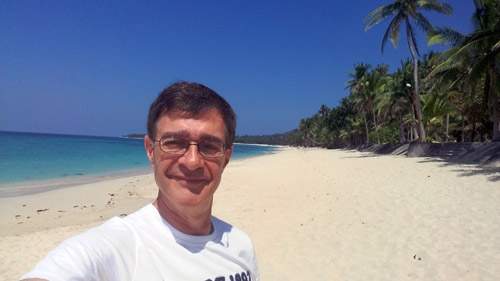Searching for True Paradise in Ilocos Norte
Of all the (few) places I have so far visited in the Philippines, the northern part of Luzon has to be one of the nicest. The province of Ilocos Norte in particular is very pleasant, not least because it borders the sea and the place actually smells fresh, while the countryside is green and pleasant.
Laoag is its capital. It has a population of just over 100,000 and has the distinction, if that is the right word, of being the northernmost city in the nation. The foothills of the Cordillera Central mountain range to the east, and the South China Sea to the west are its physical boundaries.
Long before the Spaniards arrived, there was an extensive populated region, consisting of the present provinces of Ilocos Norte, Ilocos Sur, Abra and La Union, which was renowned for its gold mines. Merchants from Japan and China would visit the area to trade gold with beads, ceramics and silk. When the Spanish conquistadors sailed along the coast, they were surprised to see numerous sheltered coves, known as ‘looc’, where the locals lived and hence they named the region ‘Ylocos’ and its people ‘Ylocanos’.
Tourism has become a major economic driver of Laoag and the local airport has seen a surge in Chinese and Taiwanese tourists flocking to the city to splurge out in its profitable casino, located inside the only 5-star hotel in the northern Philippines – Fort Ilocandia Hotel and Resort.
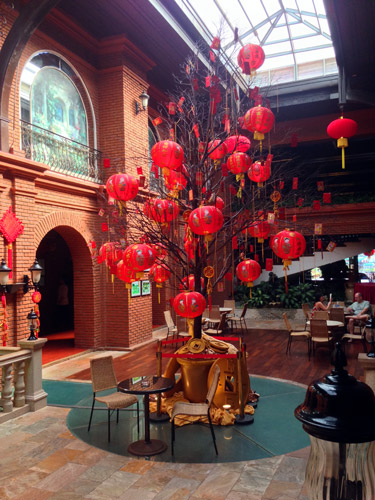
You can wander through large swathes of its gardens, before being politely stopped from going any further by smart and friendly hotel security staff.
Laoag is a very pleasant town and even if you arrive in the middle of the night, there is a splendid welcoming sight in the form of the town hall government buildings lit up in a stunning display. It’s no surprise to me, at least, that Laoag City has recently been adjudged the number one tourism destination in the region and in the top ten of the whole archipelago.
Taking the road a little south from Laoag, is the town of Paoay, famous for its Saint Augustine Roman Catholic Church. Completed in 1710, the church is famous for its highly distinctive architecture, highlighted by the enormous buttresses on the sides and back of the building. It was declared a National Cultural Treasure by the Philippine government in 1973 and a UNESCO World Heritage Site under the collective group of Baroque Churches of the Philippines in 1993.
Its most striking features are the 24 huge buttresses, each about 1.67 metres thick at the sides and back of the building, designed as a possible solution to destruction due to earthquakes. It also has ‘step buttresses’ at the sides – probably for easy access to the roof. Javanese architecture reminiscent of Borobudur can also be seen on the church walls and facade. Interestingly the mortar used in the church includes sand and lime mixed with sugarcane juice boiled with mango leaves, leather and rice straw!
Adjacent, but standing some distance away from the church as a protection against earthquakes, is a three-storey coral bell tower, which was begun some 80 years after the church. However it served a dual purpose, being used as an observational post for Filipino revolutionaries against the Spaniards in 1898 and by Filipino guerrillas against Japanese soldiers during World War II.
Talking of revolutionaries, Valentín Díaz – a Filipino patriot who was among the founders of the Katipunan that started the Philippine Revolution against Spain in 1896 – was born in Paoay. He was one of the signatories of the Pact of Biak-na-Bato in 1897, and he joined the revolutionaries exiled in Hong Kong as one of the conditions set forth in the Pact.
But it’s time to move on – northwards now; and before long we pass what must be one of the weirdest houses I have seen in a long while. OMG! Who would actually WANT to live in a house like this?
First up, we get to the Cape Bojeador Lighthouse – the northwestern-most point in Luzon, located approximately 35 kilometres from Laoag. It’s a Spanish colonial-era lighthouse, also known as Burgos Lighthouse. It was first lit on March 30, 1892, and is set high on Vigia de Nagpartian Hill.
The 20 metre octagonal stone tower was part of the Spanish government's master plan of illuminating the Philippine archipelago. It is typical of the Spanish Colonial lighthouses which were all made with bricks that are still produced in the area. The tower is topped with a bronze cupola and a viewing gallery, surrounded by a decorative iron grill.
The intense earthquake of 1990 that hit most of Luzon damaged the lenses and displaced the mechanism alignment of the original first-order apparatus making it inoperable. So the beam now comes from a modern electric lamp that is powered by solar panels (as opposed to the previous light provided by pressurized kerosene lamps). It flashes once in every minute.
Cape Bojeador Lighthouse was declared a National Historical Landmark on August 13, 2004, and a National Cultural Treasure on June 20, 2005 by the Philippine Government.
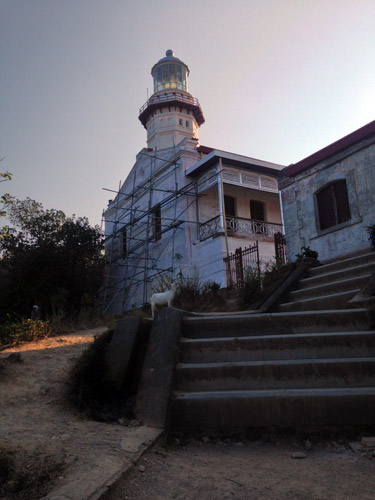
Unfortunately, the lighthouse is covered in scaffolding and, apart from being able to climb a few steps, access to the building beneath the lighthouse is not possible. There are some nice views of the sea below you, but otherwise, it is pretty underwhelming, all told.
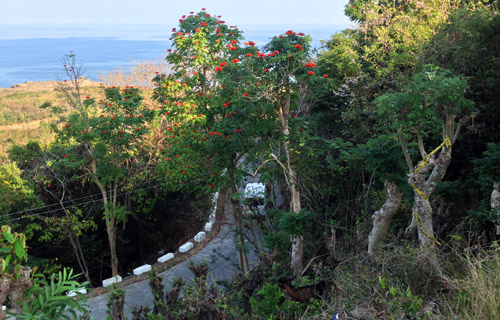
Well, it’s not long till we get to one of the must-see sights along the northern Luzon coast – the Bangui Wind Farm. This massive wind-driven powerplant was actually the first in Southeast Asia and is also the biggest.
The wind farm uses 70-metre high Vestas 1.65 MW wind turbines, arranged on a single row stretching along a nine-kilometre shoreline, spaced 326 metres apart, each with 41 metre-long blades, and a rotor diameter of 82 metres.
The area is pretty much undeveloped and uninhabited, making it an ideal site. In its first year, the project produced a 5% discount of the weighted average price in the wholesale electricity spot market – saving approximately 70 million pesos ($1.4m) for electricity consumers. They now produce 40% of Ilocos Norte's total electricity demand.
It’s a lovely sight, which reminds me of the wind farms in the UK’s Pennine district. Silent, impressive and beautiful to watch.
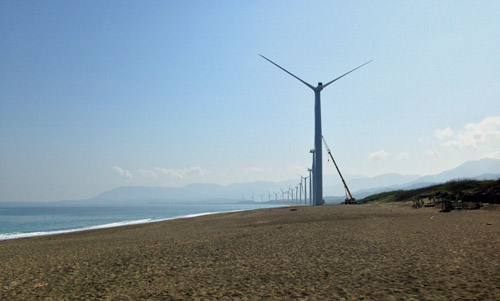
Not far up the road is a scenic cove above which the windmills soar. There are some rock formations which are pretty snazzy, and to add to the attractions, there’s a sculpture by Paul Quiano, a famous Ilocano-Ibaloi sculptor, depicting the Epic of Lam-ang – a poem by Pedro Bucaneg.
It’s all about Lam-ang who gets angry with a crocodile for some unfathomable reason and knocks the living daylights out of it, before removing its teeth which he gives to the local maidens to make necklaces out of.
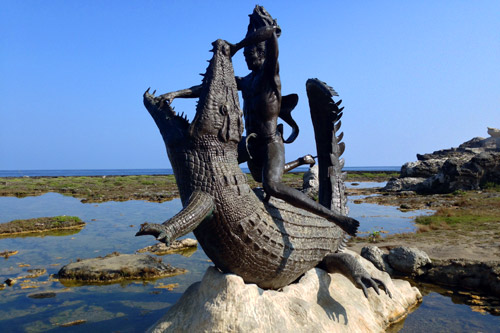
Lam-ang has obviously watched that programme on National Geographic Channel which explains that to subdue a croc, you have to approach it from behind, for that is where it has a blind spot. Approach from in front and you’re far more likely to be turned into a tasty snack…
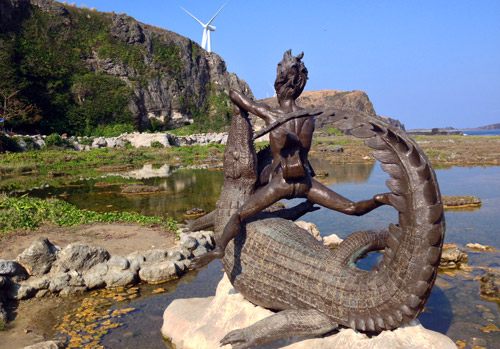
We progress further up the road, and now we are at the quaintly named Pagudpud, famous for a hole in a rock. No, really!
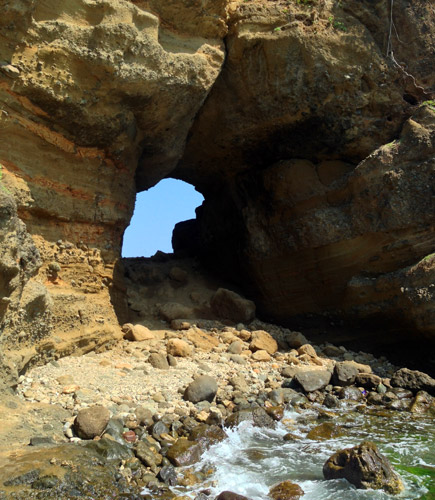
I’m sure it’s a very pretty hole, as holes go; and the local kids get to earn 20 pesos a time for taking the tourists round the corner of a rock to see it – as if they couldn’t find it for themselves. But it’s hardly earth shattering, I have to say.
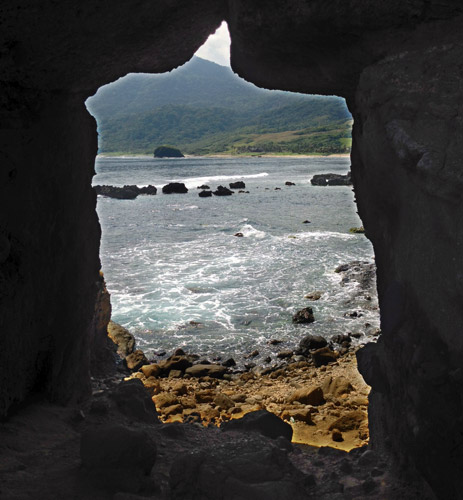
We press on towards paradise: “Nestled among endless turquoise waters and powdery white sand in Pagudpud is a seven-hectare exclusive paradise that is emerging to be the crown jewel of Ilocos Norte,” reads the website of a beach resort calling itself Hannah. “Even before entering Hannah's Beach Resort and Convention Center, one would already feel a sense of being at peace with nature. The sprawling mountains, the breathtaking views of the sea, and the sight of windmills all pave the way for the perfect getaway experience to come.”
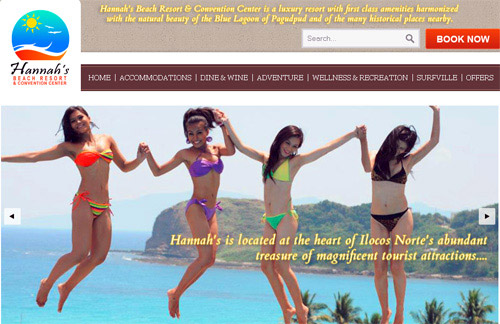
Hannah even has its own zip line, which spans 1.2 kilometres, and is reportedly the longest over water in the entire world. Or, if you read GMA TV’s web site: “Within the grounds of Hannah’s, you can try the longest zip line over open air in the country.” You mean you don’t have to zip your way through a vacuum? Now that’s a relief!
The ride, which must take all of 30 seconds costs P700/person – or about 10 quid! Do people really have that much money to waste? Apparently they do!
“It is one of the latest attractions of the resort to further highlight, magnify and present the natural beauty of the Blue Lagoon from different angles and perspectives, creating a whole new experience,” the blurb continues relentlessly. “The zipline was constructed to provide guests with the ride of their lives. The adrenaline rush of the launch from a mountain, the 80 kph speed, the view of the exotic fauna and flora of the azure and pristine waters below, the serene blue horizon and verdant mountain slopes in the backdrop, and the cool, fresh and rejuvenating sea breeze while traversing over the Blue Lagoon will definitely be a 360 degree-feast-for-the-senses.” Yeah; right. Just make sure you don’t blink!
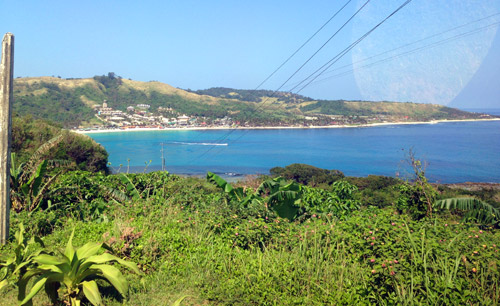
It all sounds too good to be true.
It IS too good to be true!
The beach is underwhelming in the extreme; pop music blasts your senses from loudspeakers strung up throughout the entire resort…

There’s even a plastic dinosaur park being constructed, as if the endless ‘lifesize’ plastic models of pop and Hollywood stars, such as Elvis Presley, Charlie Chaplin and Marilyn Monroe (with suitably billowing skirt, of course) and cartoon characters isn’t more than enough already.
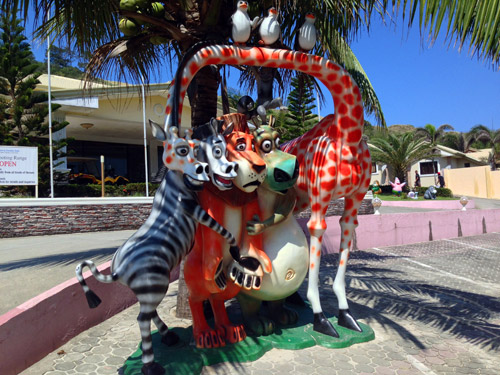
Reading some of the comments on the likes of Tripadvisor would surely put anyone off from ever setting foot in Hannah’s. This one particularly got to me: “If you want to have a vacation designed for torture, Hannah's is the place. We went during Holy Week on a P7500 a night per villa, only to find that they misrepresented a 20 sqm airless room as a villa. Room decor comes as mismatched beds in primary colors over floral tiles, accented by dusty plastic flowers.”
Time for a quick pee (in a disgusting ‘CR’, as if that is any surprise) before taking off and putting as much distance between us and Hannah’s as fast as possible.
Luckily, not all resorts in Ilocos Norte are like Hannah’s. On the contrary, a truly excellent resort is called Saud Beach.

As their web site proclaims: “All you really need to bring is your swimsuit. We'll take care of your accommodations and Mother Nature will provide the rest - the light, the sound of the surf, the touch, tastes, and scents of her lovely creations.” I already like the place!
Some web sites dub Saud Beach as the "Boracay of the North", though I’m not sure if that is a good thing or not. It has a long stretch of fine, powdery sand and its peaceful atmosphere – not spoiled for a second by the thump thump thump of disco music, like you get all over the Philippines – adds to its undoubted attractions.
The lunchtime menu is good; the service is not at all bad; the prices are not outrageous; and the last time I had a beach like this all to myself was perhaps forty years ago in the Cayman Islands.
If the owners of Hannah’s ever get to read this blog (can they actually read, I ask myself?) THIS is what their so-called ‘paradise’ should be striving for.
